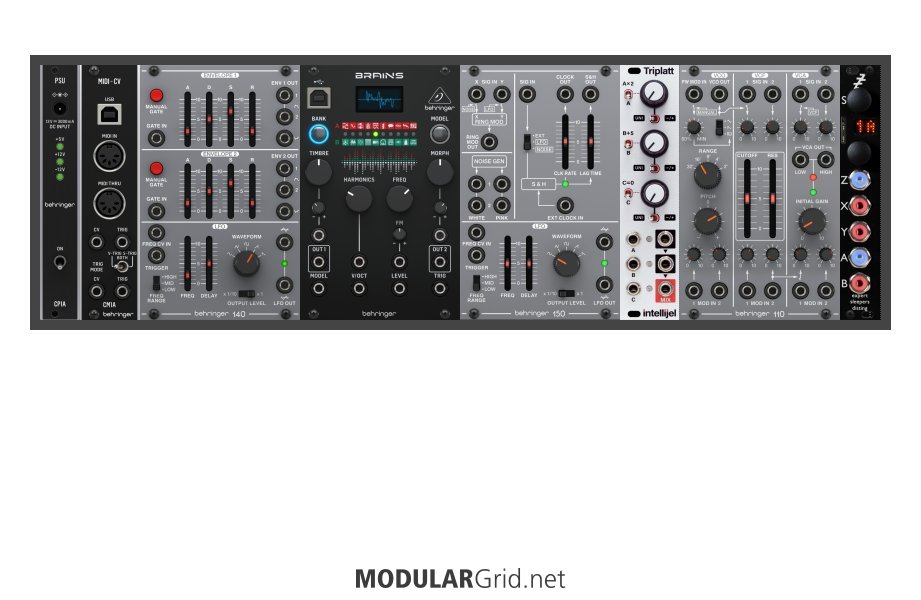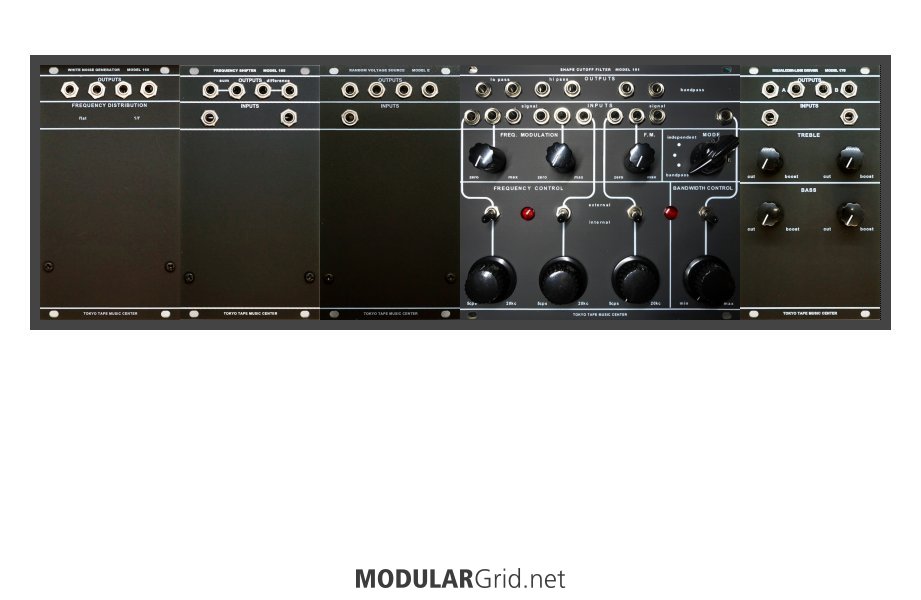Posts of videos demonstrating other small systems are also on topic.
So, inspired by the recent thread asking for suggestions, I give you this starter B.Roland rack with a modern twist and under $1000.

https://www.modulargrid.net/e/racks/view/2182449
84HP with a total cost of $856 without case. Now, you can get the Behringer rack for $20 more than they sell the power supply for and it comes with the power supply, so $876. To be fair, there isn't a strict output module here, that's probably ok, but, if not, you can add two attenuator cables for under $24, so $900. Note that there are no mults, mults are dead, long live tip-top stackables, you'll probably need at least four in a medium length, let's make it an even five so we're right at $30. That leaves you about $70 to fill out your cable budget.
Further, since the Behringer power supply comes with two flying bus cables, and you are only using one for this system, you can power a second rack without more power. Tip-Top ears and z-rails are $60. The power for this rack is 480ma on 12v which leaves you about half of the available power for the second rack. That's somewhat higher than most racks with this many modules owing to the digital modules. You would be limited to seven modules in your second rack, which is fine for Behringer modules as they are typically quite wide.
You get a classic sounding Roland voice, think SH-101, 2*ADSR, 2*LFO, RM, SH, White/Pink noise and all of that in classic analog. Brains gives you all of plaits plus some additional modes including supersaw. So, with Brains, you get an additional two virtual analog oscillators, or any one of the other awesome modes including 2 osc FM, chord mode, various drums, as well as a VCA/LPG. In order to effectively use all of the voices, e.g., RM, Noise, and both Brains outputs, you will need a mixer. The only mixer that really fits here is a 2HP passive. I added the Synthrotek because, like everything in this system, you can get it from Amazon. Finally, the Tip-Top DSP is massively flexible for the price and fits into 8HP.
Midi2CV implies that you are sequencing externally.
Comment, suggest alternative modules, post racks of your own...



